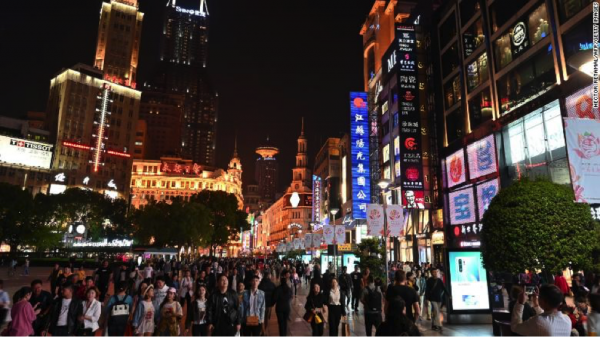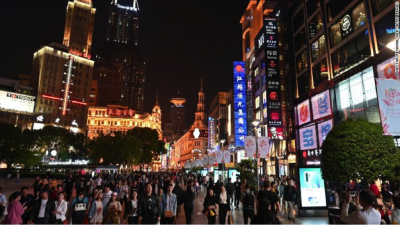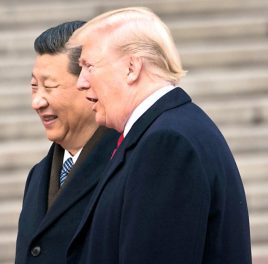By Michelle Toh – CNN Business

People walking through a shopping area in Shanghai. China’s retail sales growth cooled significantly last month, according to figures released Wednesday, May 15. Photo credit: CNN
May 15, 2019 – Hong Kong (CNN Business)China’s vast economy showed new signs of weakness last month, raising the likelihood of increased government efforts to stimulate growth as the trade war with the United States escalates.
Key indicators of economic activity, like industrial output and retail sales, cooled significantly last month, according to figures posted by the National Bureau of Statistics on Wednesday.
Industrial output, which measures manufacturing, mining production and other sectors in China, grew 5.4% in April compared to the previous year, significantly lower than analysts had expected. It was also a sharp dip from last month, when growth came in at 8.5%.
China’s economy had a steady start to 2019
Analysts say the slump could prompt China to take more action to boost activity in the world’s second biggest economy as increased US tariffs take effect after a breakdown in trade negotiations. Beijing has already instituted several measures in recent months, like cutting taxes
“Downbeat data strengthen the case for more easing,” Julian Evans-Pritchard, senior China economist at Capital Economics, said in a research note. “Given budget constraints on local governments, monetary policy will probably take the lead,” he added.
While further stimulus could spark a slight uptick in growth this year, Evans-Pritchard says it’s unlikely to be large enough for a “strong recovery.”
China’s retail sales growth slowed to a 16-year low last month, raising questions about consumer confidence in one of the world’s biggest markets. Sales grew by 7.2%, far weaker than analyst forecasts of 8.6%.
But activity in the sector also decelerated because there were fewer holidays in April this year than last, said Jingyang Chen, a China economist at HSBC, in an analyst note.
and increasing infrastructure spending, as economic growth slumped to a near three-decade low.
“Downbeat data strengthen the case for more easing,” Julian Evans-Pritchard, senior China economist at Capital Economics, said in a research note. “Given budget constraints on local governments, monetary policy will probably take the lead,” he added.
While further stimulus could spark a slight uptick in growth this year, Evans-Pritchard says it’s unlikely to be large enough for a “strong recovery.”
China’s retail sales growth slowed to a 16-year low last month, raising questions about consumer confidence in one of the world’s biggest markets. Sales grew by 7.2%, far weaker than analyst forecasts of 8.6%.
But activity in the sector also decelerated because there were fewer holidays in April this year than last, said Jingyang Chen, a China economist at HSBC, in an analyst note.
Nonetheless, economists now widely expect the government to introduce more stimulus to support the private sector in the coming months.
The US-China trade war remains one of the biggest risks to China’s economy, with tariffs expected to hurt economic growth on both sides. Last week, Washington increased tariffs on $200 billion of Chinese goods, prompting Beijin. And if trade tensions continue to escalate, experts say that will only put more pressure on Beijing to step up easing measures.
“The need for further stimulus is amplified by the trade war escalating last week,” wrote Katrina Ell, an economist at Moody’s Analytics. “The task before Beijing to stabilize domestic demand amidst slower global growth and a festering trade war is not easy.”







